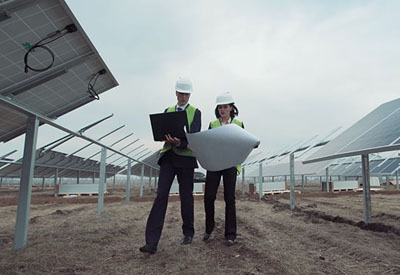Canadian and Swedish Program to Advance Women in Clean Energy

July 6, 2017
Canada and Sweden are setting up a new global Technology Collaboration Program (TCP) under the International Energy Agency (IEA) to promote leadership roles for women in clean energy.
The establishment of the Clean Energy Education and Empowerment TCP (C3E TCP) was announced during the recent 8th Clean Energy Ministerial (CEM8) meeting in Beijing. It builds on the successful C3E initiative created by member governments of the CEM in 2010. Shown in photo: Jim Carr, Minister of Energy, Canada (left), and Ibrahim Baylan, Minister for Policy Coordination and Energy, Sweden.
The TCP aims to raise awareness, share best practices, establish a network for information exchange and commit to action across borders so that more women are encouraged and empowered to become leaders in clean energy.
Women make up 52% of the world population, but only 30% of science researchers globally, according to the United Nations. The lack of professional role models for young women might be a factor discouraging more women from participating in these technical fields, according to the OECD.
“If we want to be successful in the transition to a clean energy future, we need to mobilize the talent and capacity from the whole population, and not only half of it,” says Ibrahim Baylan, Sweden’s Minister of Policy Co-ordination and Energy.
Under the aegis of the International Energy Agency, TCPs provide a framework for stakeholders from both the public and private sector to share knowledge, work collaboratively and, where appropriate, pool resources to deliver integrated, cost-effective solutions to common challenges.
The C3E TCP will provide a new international platform that will focus on four distinct areas: data collection, career development, recognition and awards programmes and dialogue. Italy is in the process of formally joining the C3E TCP, while Chile, Finland and the United Arab Emirates are considering participation.
Photo source: IEA.









![Guide to the Canadian Electrical Code, Part 1[i] – A Road Map: Section 52 — Diagnostic imaging installations](https://electricalindustry.ca/wp-content/uploads/2022/11/Guide-CE-Code-2.png)






